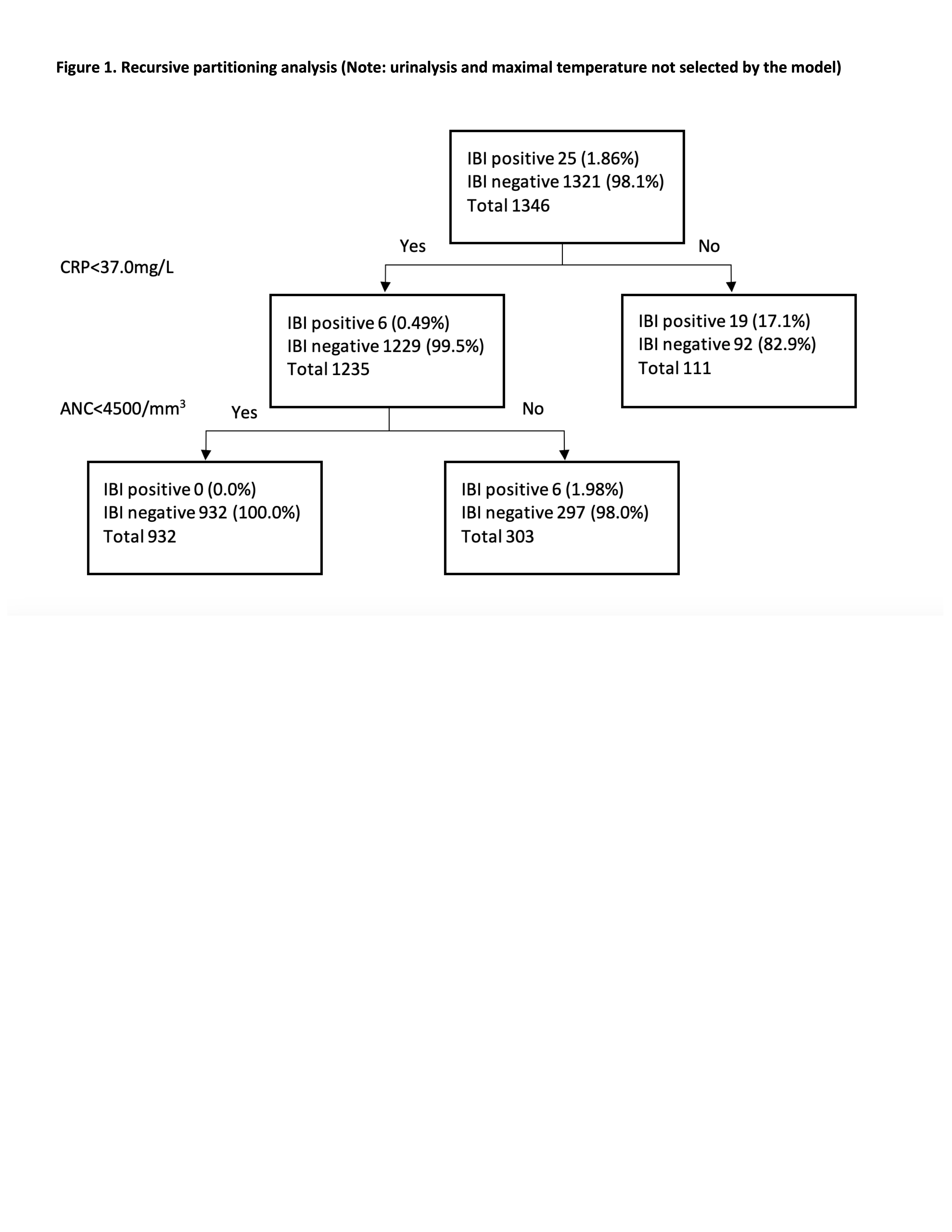Emergency Medicine
Session: Emergency Medicine 3: Serious Bacterial Infections
91 - Enhancing AAP Guidelines for Identifying Febrile Young Infants at Low-Risk of IBI without Procalcitonin
Saturday, May 4, 2024
3:30 PM - 6:00 PM ET
Poster Number: 91
Publication Number: 91.1520
Publication Number: 91.1520
- CW
Caroline Wolek, BSc (she/her/hers)
Medical Student Research Trainee
McGill University
Montreal, Quebec, Canada
Presenting Author(s)
Background: Febrile infants ≤60 days old are at risk of invasive bacterial infections (IBI; bacteremia or bacterial meningitis). Guidelines from the American Academy of Pediatrics (AAP) recommend that when procalcitonin is unavailable, C-reactive protein (CRP), absolute neutrophil count (ANC) and maximal temperature can be used to identify infants at low-risk of IBI. This combination performs with high sensitivity, but lacks specificity, misclassifying many infants as high-risk.
Objective: To improve the diagnostic accuracy of the AAP-recommended combination of CRP≤20.0mg/L, ANC≤5200/mm3 and maximal temperature ≤38.5◦C.
Design/Methods: This was a secondary analysis of prospectively collected quality improvement data of all infants ≤60 days old evaluated for fever at an urban tertiary pediatric emergency department from January/2018 to December/2022. All previously healthy, term infants aged 8-60 days with rectal temperatures of ≥38.0◦C and meeting AAP febrile infant guideline inclusion/exclusion criteria were included for analysis. Standardized clinical and laboratory data were collected for all infants, including 30-day follow-up to ascertain for any missed IBIs. Final IBI classification followed AAP guideline definitions. Binary recursive partitioning was used to identify optimal high-risk thresholds and generate a decision rule (cost of missing an IBI 25:1). Specificity, sensitivity (Sn) and negative predictive value (NPV) were calculated for the derived decision rule and AAP strategy.
Results: Of 1346 included infants, 1104 (82.0%) were >21 days old, 777 (57.7%) were boys, and 25 (1.9%) had IBIs. The AAP combination of CRP, ANC and temperature classified 644 infants as low-risk, missing no cases of IBI [Sn: 100.0% (95%CI 86.3-100.0%); NPV: 100.0% (95%CI 99.4-100.0%)]. The derived rule identified low-risk thresholds of CRP < 37mg/L and ANC < 4500/mm3; urinalysis, temperature and viral test results were not selected. The derived rule classified 932 infants as low-risk, also missing no IBIs [Sn: 100.0% (95%CI 86.3-100.0%); NPV: 100.0% (95%CI 99.6-100.0%)]. Specificity at AAP thresholds was 48.8% (95%CI 46.0-51.5%), compared to 70.6% (95%CI 68.0-73.0%) for the derived rule. Diagnostic accuracy was nearly identical when rounded to easier-to-apply thresholds of CRP < 35mg/L and ANC < 4500/mm3.
Conclusion(s): Compared to current AAP recommendations, the derived thresholds of CRP and ANC maintained sensitivity and improved specificity for identifying infants at low-risk of IBI. If externally validated, the derived rule could reduce lumbar punctures, antibiotic treatment and hospitalization for more low-risk infants.
.png)

.png)
